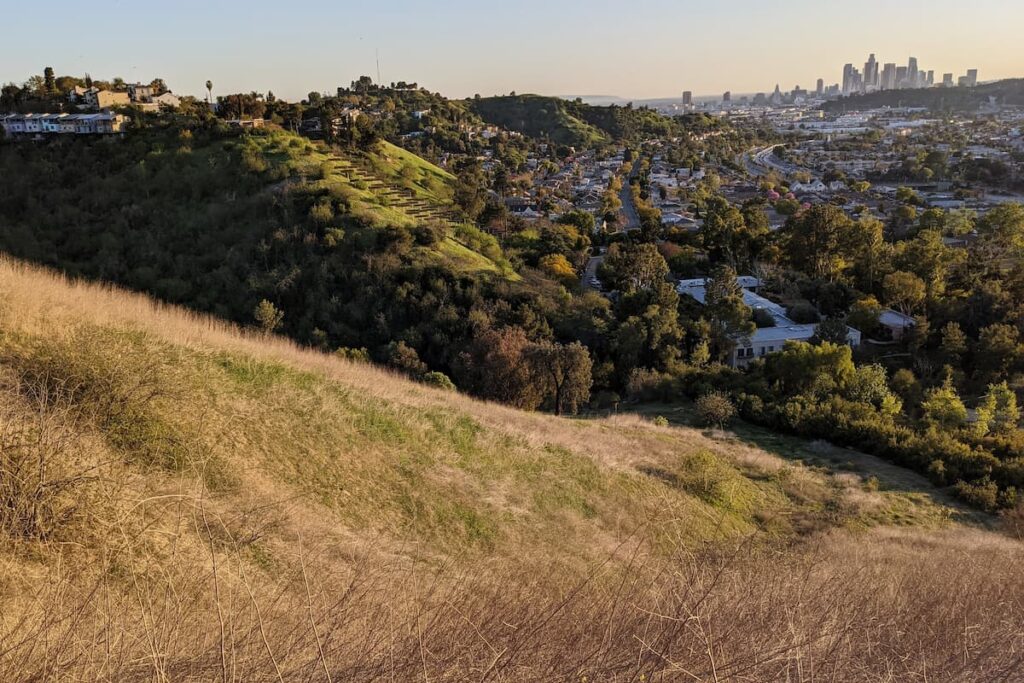A Vast Urban Oasis in the Heart of Los Angeles
Tucked within the dense sprawl of Los Angeles, Griffith Park stands as a sprawling testament to natural preservation and urban escape. At 4,210 acres, it dwarfs other American city parks such as New York’s Central Park and San Francisco’s Golden Gate Park, both in size and elevation. Unlike its counterparts, Griffith Park is still largely uncut — much of it remains a wild, mountainous terrain with minimal development. This unique blend of wilderness and accessibility makes Griffith Park not only a green lung for the city but arguably the most impressive urban park in the United States.
Griffith Park’s appeal lies in its diversity. It offers a zoo, steep hiking trails, dirt paths for horseback riders, paved routes for cyclists, and a variety of nature and cultural experiences. Families find joy in playgrounds and an old-fashioned trainyard, while science and history enthusiasts can explore museums like the Griffith Observatory and the Autry Museum of the American West. The park even boasts remnants of Hollywood history, including the inspiration for Disneyland and iconic film locations.
Cultural Depth and a Storied Past
The park’s origins trace back to 1896, when Colonel Griffith J. Griffith donated 3,000 acres with the stipulation that it be used as a public space “for the uses of recreation, health and pleasure.” The land itself carries a deeper legacy — it once belonged to José Vicente Feliz through a Spanish land grant and before that, it was inhabited by the Indigenous Tongva people. These layers of history are carefully documented in exhibits at the Autry Museum, which includes displays on Native slavery, Western art, and pop culture artifacts tied to cowboy icon Gene Autry.
Griffith Park also played a role in civil rights history. Its Merry-Go-Round, still under repair, was the site of a racially charged incident in 1961. In another corner of the park, Amir’s Garden — created by Iranian immigrant Amir Dialameh in the 1970s — offers a serene and lush retreat that reflects the multicultural fabric of the city. Griffith Park, with its rugged hills and quiet glades, serves as both a sanctuary and a mirror of Los Angeles’ complex identity.
Adventure, Science, and Star Power
Adventure-seekers flock to Griffith’s vertical trails, such as those leading up Bee Rock, where hikers scramble over dirt paths and lizards dart underfoot. From the summit, 360-degree views of Los Angeles unfold, offering a dramatic contrast to the city’s concrete sprawl. Wildlife such as red-tailed hawks and lizards are common sightings, adding to the sense of immersion in nature.
Just below these peaks lies the Griffith Observatory, a striking Art Deco structure built 90 years ago. Free to enter and rich with scientific displays — from a Tesla coil to an actual moon rock — it doubles as both a museum and a cinematic icon, featured in films like “Rebel Without a Cause” and “La La Land.” Nearby, visitors can view the Hollywood sign or hike to the historic Bronson Caves, also known as the “Batcave” from the 1960s “Batman” TV series.
Unwinding with Food, Drink, and Reflection
Beyond the hikes and exhibits, Griffith Park offers space to unwind. The Trails café, nestled near the Fern Dell nature trail, serves coffee and pastries beneath shady trees, creating a quiet moment to recharge. On the east side, Golden Road Brewing’s beer garden welcomes weary hikers with craft beer and comfort food just a short walk from the old zoo and Autry Museum.
Despite its fame and popularity, Griffith Park remains a place of personal connection. It’s a refuge for those seeking solitude, a playground for families, and a stage for Hollywood history. With its breathtaking views, rich heritage, and abundant offerings, it’s more than just a park — it’s a living, breathing part of Los Angeles. As city parks across the nation evolve, Griffith continues to set the bar for what an urban wilderness can be.


